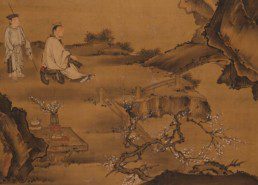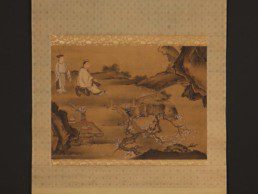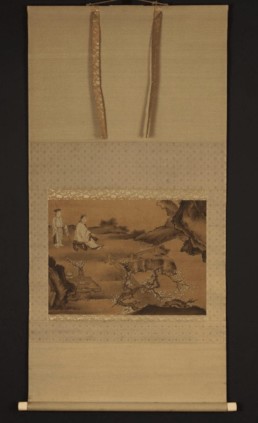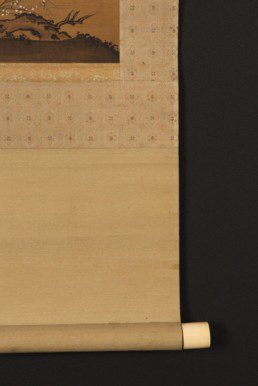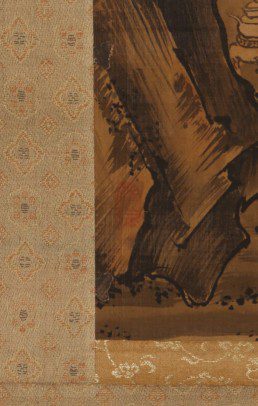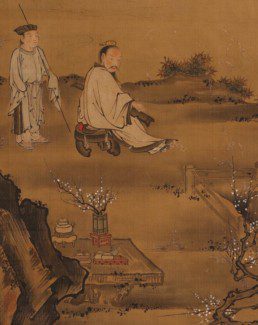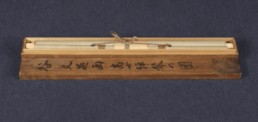Hanging Scroll by Tani Bunchō (1763 – 1840)
Artist:Tani Bunchō (1763 - 1840)Era:EdoPrice:$3,500Inquire:info@shirakuragallery.com
A masterpiece by one of the premier Literati painters from the Edo period. Born into a wealthy samurai family, At a young age, Bunchō was given a stipend that enabled him to study painting and pursue a career in the arts. From the age of 10 he studied Kano painting under Kato Bunrei, then later when he was 19, took up an apprenticeship in the Nanpin School of painting under Gentai Watanabe. An artist with an eclectic taste, he went on to master many styles of Chinese, Japanese, and Western painting.
Color on Japnanese silk (kenpon) with a silk border, this scroll is 124cm tall and 61cm wide. The artwork on the scroll is 36cm tall and 49cm wide and bears Bunchō’s seal (examples of artist signature and seal available upon request). In good antique condition, the scroll comes with a period box with the writing “Tani Bunchō ga Koushi Dankin zu” meaning, Painting of Samurai General Playing the Koto.
Additional Resources:
https://www.britishmuseum.org/collection/term/BIOG6536
https://www.suntory.com/sma/exhibition/2013_3/display.html
https://www.fujibi.or.jp/en/our-collection/profile-of-works.html?work_id=6521
